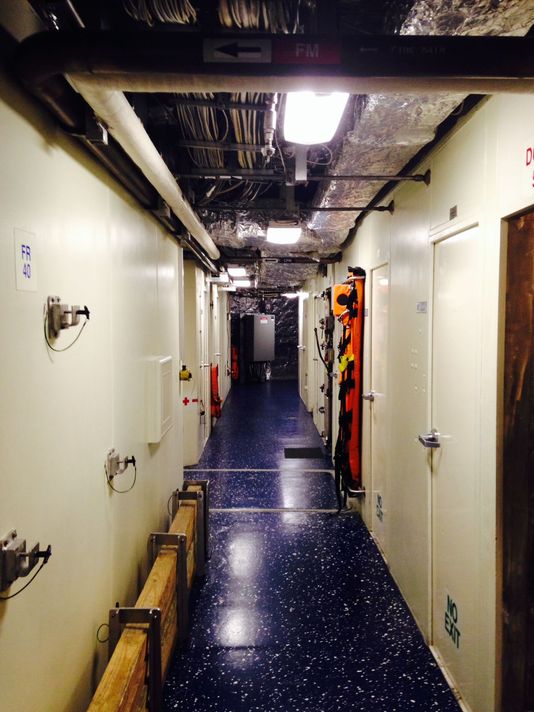 |
A snapshot of American Navy's interior lighting before upgrading to LED installaitons. The T-LED lighting installations will save millions for th(via Navy Times/LEDinside)
|
Navy installations are replacing outdated fluorescent bulbs with tubular LED lamps (T-LED) as part of its commitment to energy efficiency across the shore enterprise.
T-LED lighting is being installed in Navy installations around the world, including administrative buildings, athletic facilities, street lights, and parking garages as a means to save money, while contributing to the Navy's energy efficiency efforts.
Benefits of LED lightbulbs include improved efficiency and durability, and mercury-free construction. LED lightbulbs are significantly brighter than fluorescent lighting, and last much longer, saving the Navy money and man-hours.
According to Secretary of the Navy (SECNAV) Ray Mabus, changing the light bulbs on a ship to LEDs saves 3 percent of the total energy on that ship. In terms of fuel savings, this is approximately $150 million in fuel annually for the Navy's fleet.
"Navy ships have been using mercury-free LED lightbulbs, making replacement of bulbs easier to handle and dispose of," said Lt. Cmdr. Gareth Montgomery, action officer for Navy Installations Command (NIC) energy branch. "There are significant safety and efficiency advantages, since fluorescent bulbs are regularly replaced."
For the shore, T-LED lights are proven to better illuminate the work space, allowing easier reading and writing. According to the National Eye Institute (NEI), LED lighting can reduce eye strain in the work place. A recent memo from Naval Facilities Engineering Command (NAVFAC) said T-LED lamps can be used when there is no degradation of the amount of light to the space and no safety hazard exists.
In the past, T-LED lighting was not allowed, regardless of their performance ability, because the entire light fixture had to be replaced. That is no longer an issue as T-LED lamps are designed to replace existing fluorescent lamps in the exact same fixture. While T-LED bulbs last up to 50,000 hours, fluorescent bulbs last only around 7,500 hours. With the use of individual T-LED bulbs, Navy installations have more options to implement simple and cost-effective energy reduction projects.
"Reducing energy consumption is not just about replacing bulbs at Navy installations," Montgomery added. "It's also about turning off some lights and using natural lighting when possible."
The Navy remains committed to supporting LED lighting development. In 2007, the first LED lighting was installed on Navy ships, and in 2011, the Navy ordered $23 million worth of LED products. In 2013, National Shipbuilders Research Program (NSRP) and the Navy funded next generation LED lighting fixtures, and by 2014, LED products were used on more than 126 ships and subs of the 249 vessel fleet.
The Navy continues to invest in LED technology and in December ordered $6 million worth of LED retrofit tubes. These new tubes don't contain glass or hazardous material and use 50 percent less power.
For now, T-LED lamps are meeting performance and energy requirements and will continue to be implemented at Navy installations around the world, according to Montgomery.
Navy Installations Command is comprised of 70 installations under 11 regions with more than 52,000 military and civilian personnel to sustain the fleet, enable the fighter, and support Navy families worldwide.












